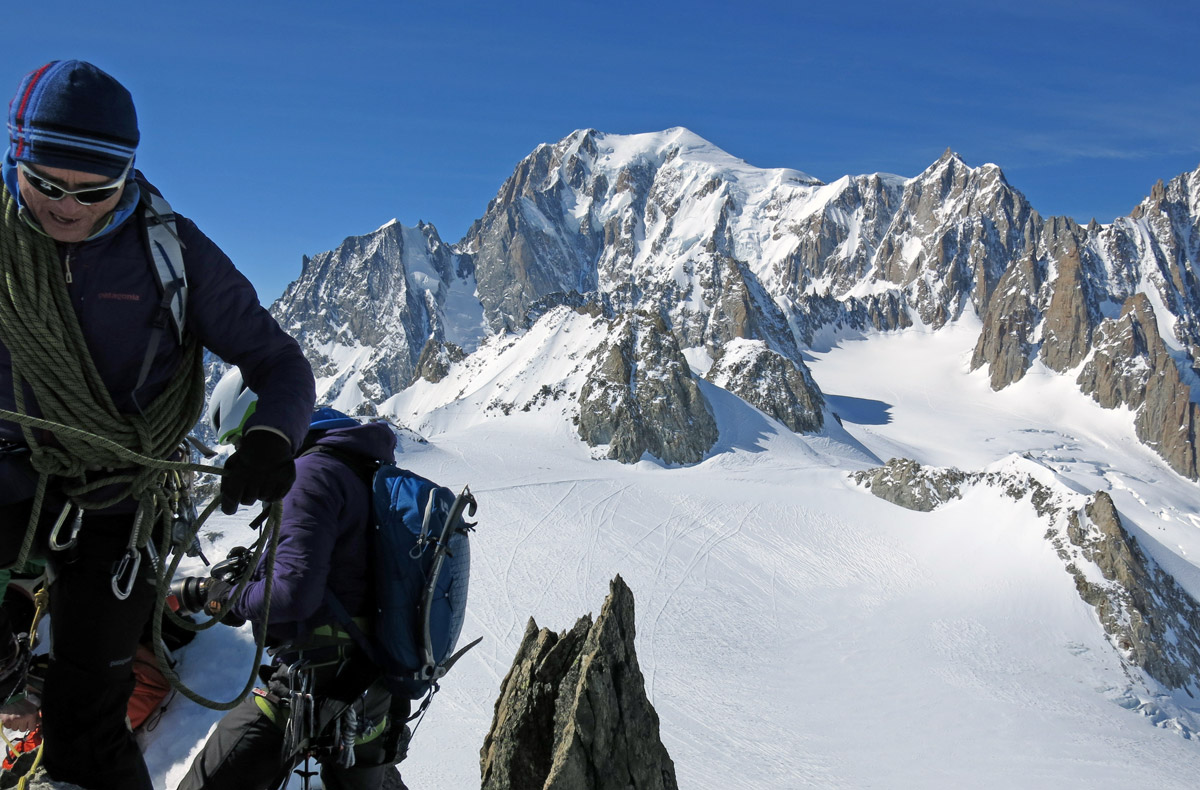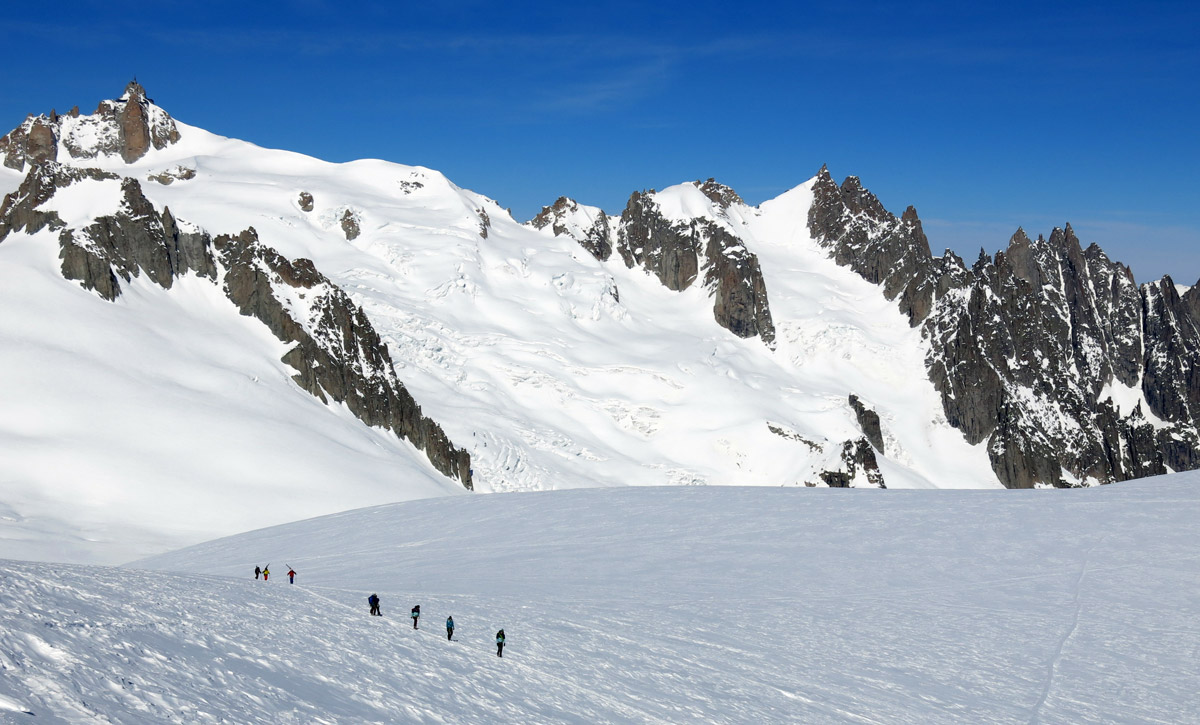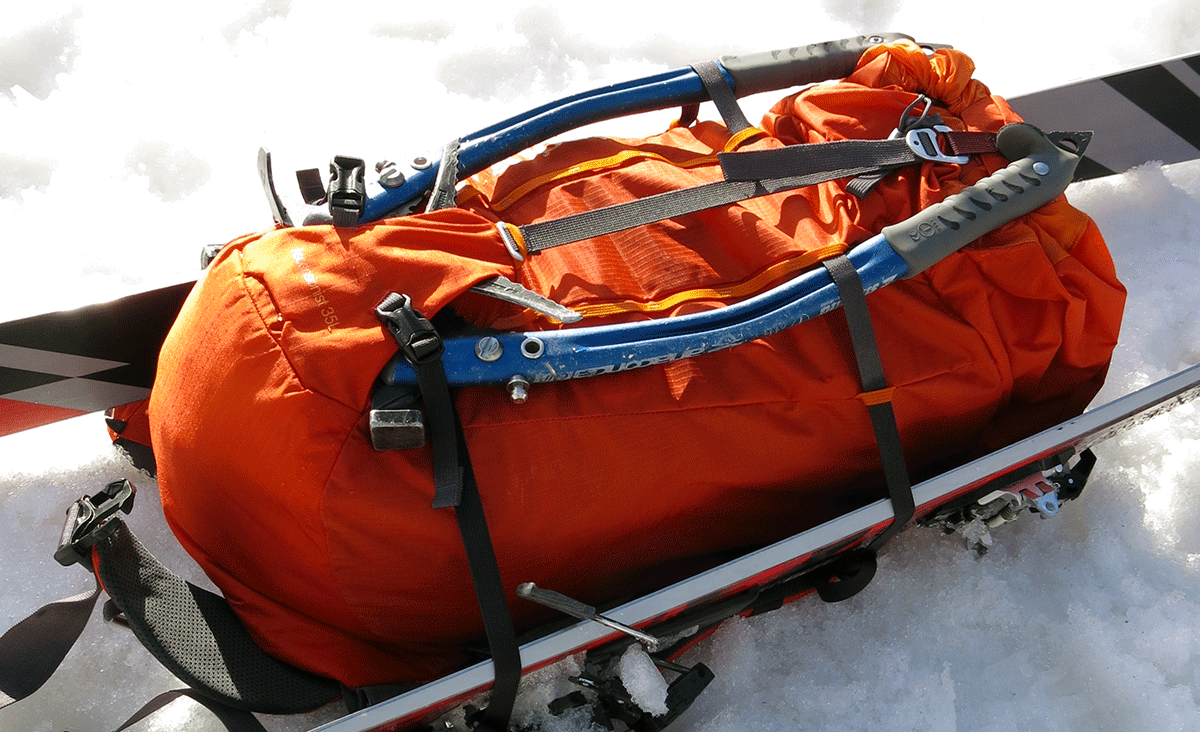Alpine Climbing with Patagonia
Putting the brand’s latest and upcoming athlete-driven gear to the test in the Alps with a team of legendary climbers


At 12,000 feet above sea level, with a cold wind perpetually whipping and the alpine sun intensified by the reflective snowfields below, the old adage “the clothes don’t make the man (or rather, person)” couldn’t be less true. Technical, carefully designed clothing and accessories won’t get you up or down the mountain but without them, you certainly won’t get far. A wet base layer, a sticky zipper or an ill-fitting hood are simply not options when the only way off of a rocky, snow-covered peak is a scramble across boulders, sheer drop-offs and glacier fields dotted with crevasses. Your gear—just like your body—needs to perform at its pinnacle when conditions are extreme.

We recently ventured to Chamonix in the French Alps—home to alpine mountaineering and climbing—where every route up the endless sea of jagged summits was completed long before GoreTex and breathability entered the gear conversation and leather and wool were the materials of the day. With their latest alpine offerings, leader in outdoor gear and design Patagonia continues its passion for creating gear that performs optimally in the mountains and is manufactured in a way that lessens the burden on the environment. With the classic, ever-changing temperatures and conditions of the Alps as our testing grounds and the California-based brand’s team of alpine climbing ambassadors as our guides, we put the latest packs and outerwear to the test while examining the rich, democratic design process that makes the products perform.

Athlete input is at the crux of product development at Patagonia. While anyone can throw on a jacket in their living room and tell you if it’s comfortable, it’s not until you’re two ice-axes deep into a multi-pitch route on the 13,806 foot Grande Jorasses that the finer points of the product can be understood. “Functionality is a core tenant of our design philosophy, so athlete-inspired design has always been at the core of our design process, and our athletes are surely our strongest critics,” says Kristo Torgersen, product line manager of Alpine Apparel at Patagonia and accomplished alpinist in his own right. “As compared to sportswear, I’ve found designing alpine gear—technical product—to be way more challenging as the product is more mission-critical to the end-user,” Torgersen adds. “Every single element must be refined to serve a functional need (or be removed), and products rely more heavily on the latest materials and textiles.”

One of the defining pieces of this philosophy is the Ascensionist climbing pack; technical enough for ski-in-climb-out missions and everything in between with no superfluous features or materials. A 6.25 oz 210-denier nylon ripstop outer balances durability without adding too much weight, meaning this pack can take a beating on the rocks without ripping, but weighs just 30 oz when empty. Legendary climber and Patagonia Alpine Ambassador Steve House played a key role in the pack’s development, giving detailed feedback on every aspect of the design from every buckle, zipper and stitch placement.
“With a climbing pack, there can be no fail points,” House mentions of the pack’s top design, where a two-fold quick cinch system can be operated easily with one hand, “a zipper can’t snag, a compartment can’t open unexpectedly. It’s not an option.” What sets the bag apart from others in its class is its streamlined usability; it’s easy to forget you’re even wearing the bag. The secondary cinch collar on the top-loading bag allows for overstuffing, so at the beginning of the climb (when you’re carrying more food and water) it can accommodate a larger load without becoming bulky. On the outside, the bag is capable of easily and safely stowing all of your alpine essentials, including crampons, ice-axes, skis and climbing rope. House adds that so much technical thought and testing went into the bag that there are hidden user features that present themselves only in the field.

A similar theme of lightweight simplicity runs throughout Patagonia’s outerwear; an “everything you need, nothing you don’t” mentality guides the line. Rather than operating in the existing layering paradigm of base layer, insulation and shell, Patagonia is aiming to disrupt the model with an upcoming piece that acts as both an insulating piece and outer layer. Though the Nano Air Hoodie won’t be available until this summer (and has already generated buzz at trade shows around the world), the piece truly performs under the tested conditions. A synthetic fill offers the warmth of fleece or down with unbridled breathability. The outer material both repels and wicks moisture and dries fast—as soon as you notice you’re wet. Best of all, the jacket is equipped with four-way stretch, meaning movement is never restricted and a carefully designed hood fits easily over a helmet. With just a Capilene 2 base layer, the Nano Air Hoodie was sufficient for warmth without overheating, from shady belays to heart-pumping ascents.

When the wind kicks up and temperatures drop, the Alpine Houdini shell provides extra protection from the elements. Based on the trail running piece of the same name, the Alpine Houdini is a true no-frills piece designed to throw on quickly over existing layers. Taped seams add to the jacket’s brawny but lightweight construction. The jacket packs easily into its own pocket (smaller than a baseball) and clips to your harness for easy access when you need it.
At the heart of all of Patagonia’s alpine products is a quest for reliability. “If we do our job poorly, we compromise not just the performance of our product, but the possibility of failing our customers in an exposed alpine environment,” says Torgersen. “We work hard to develop material-test garments and product prototypes that we take in the field ourselves, and when I have a first-hand experience in a product, if it fails to meet my critical expectations in any way, I can’t honestly stand in front of my colleagues and champion its merits.” In other words, if it has Patagonia’s name on it, it’s been tested by both the athletes and the developers—and it works.
Check out Patagonia’s full line of clothing and accessories online and keep an eye out for the innovative Nano Air Hoodie available this summer.
Photos by Hans Aschim












